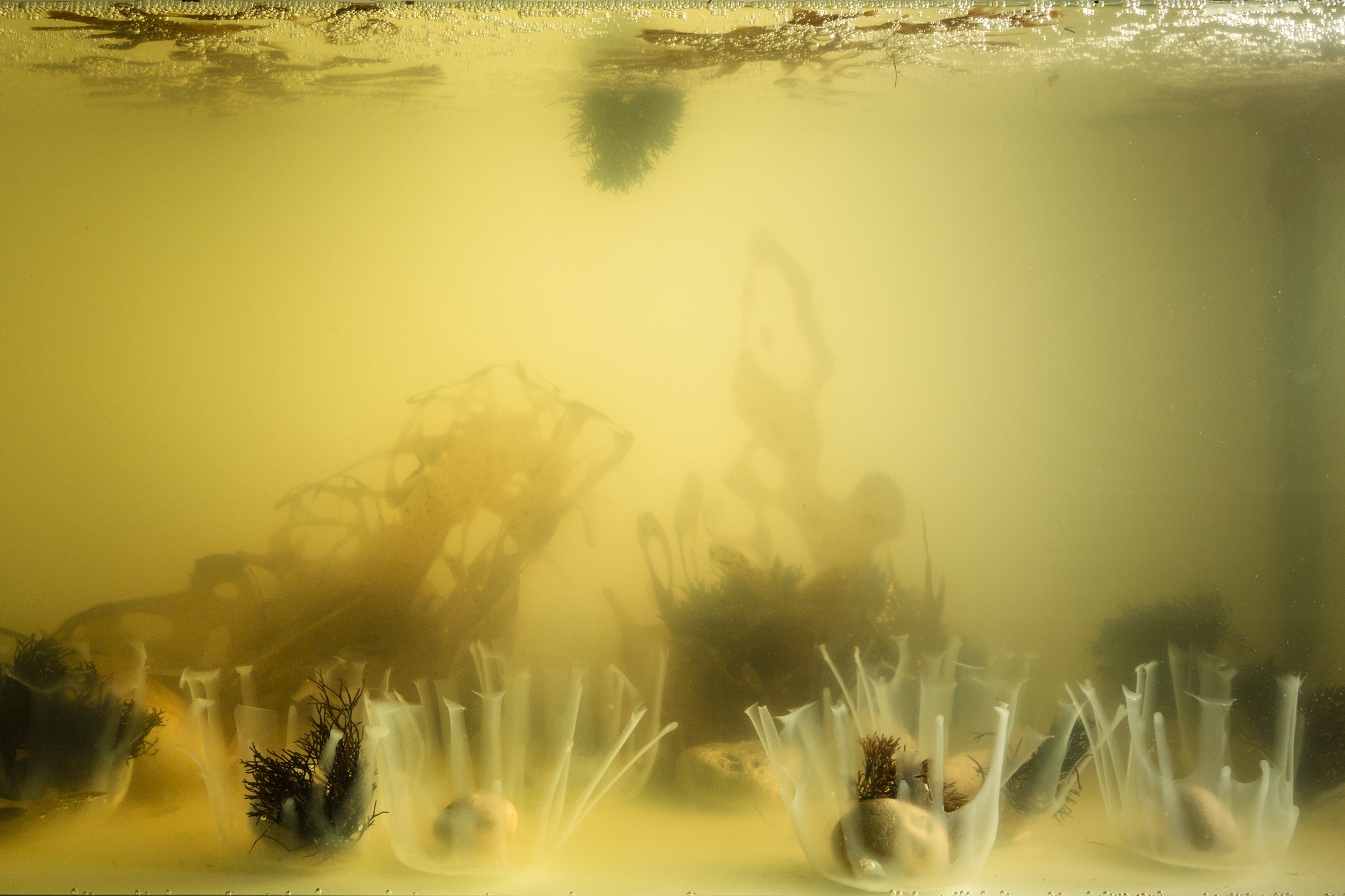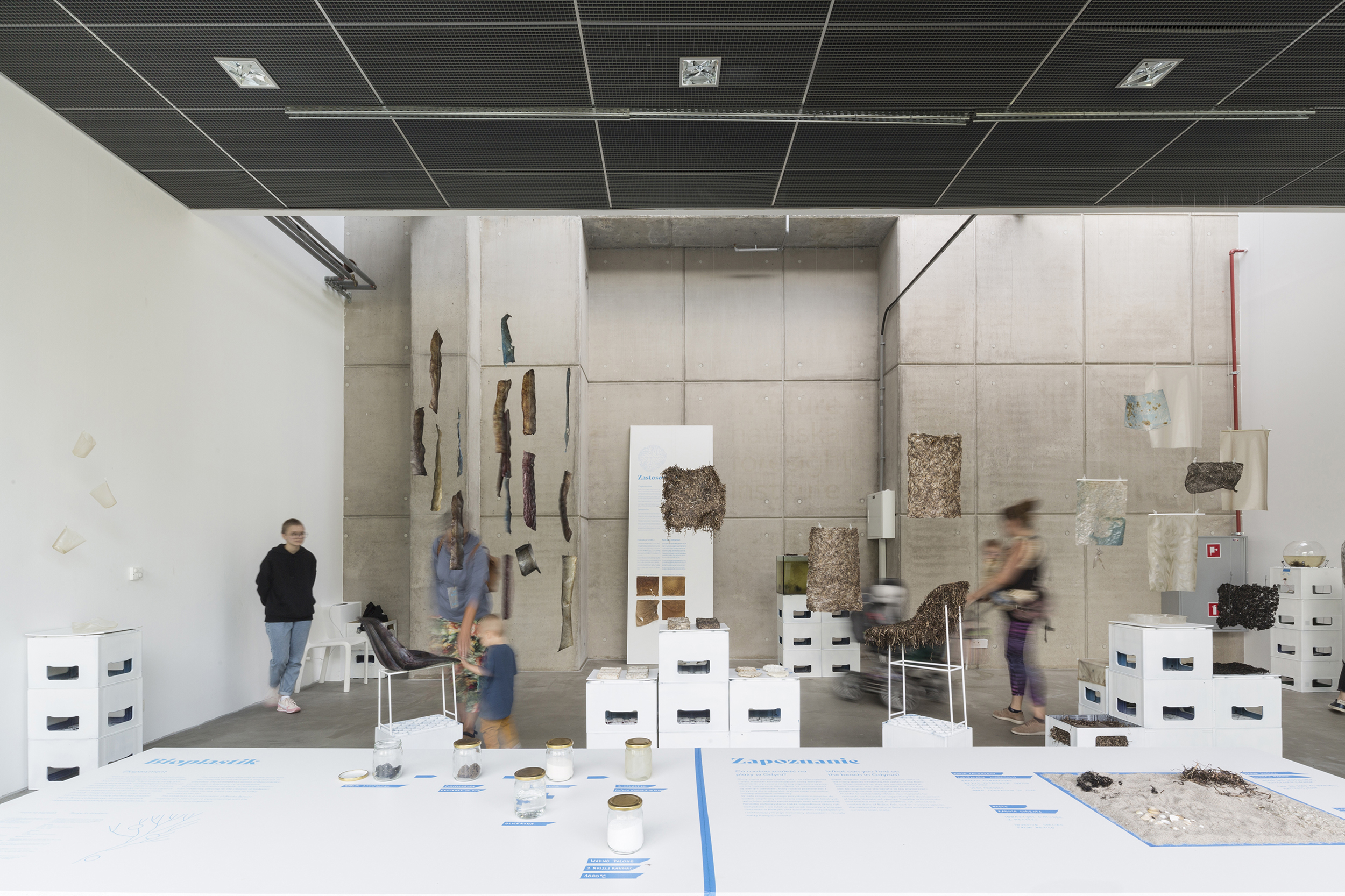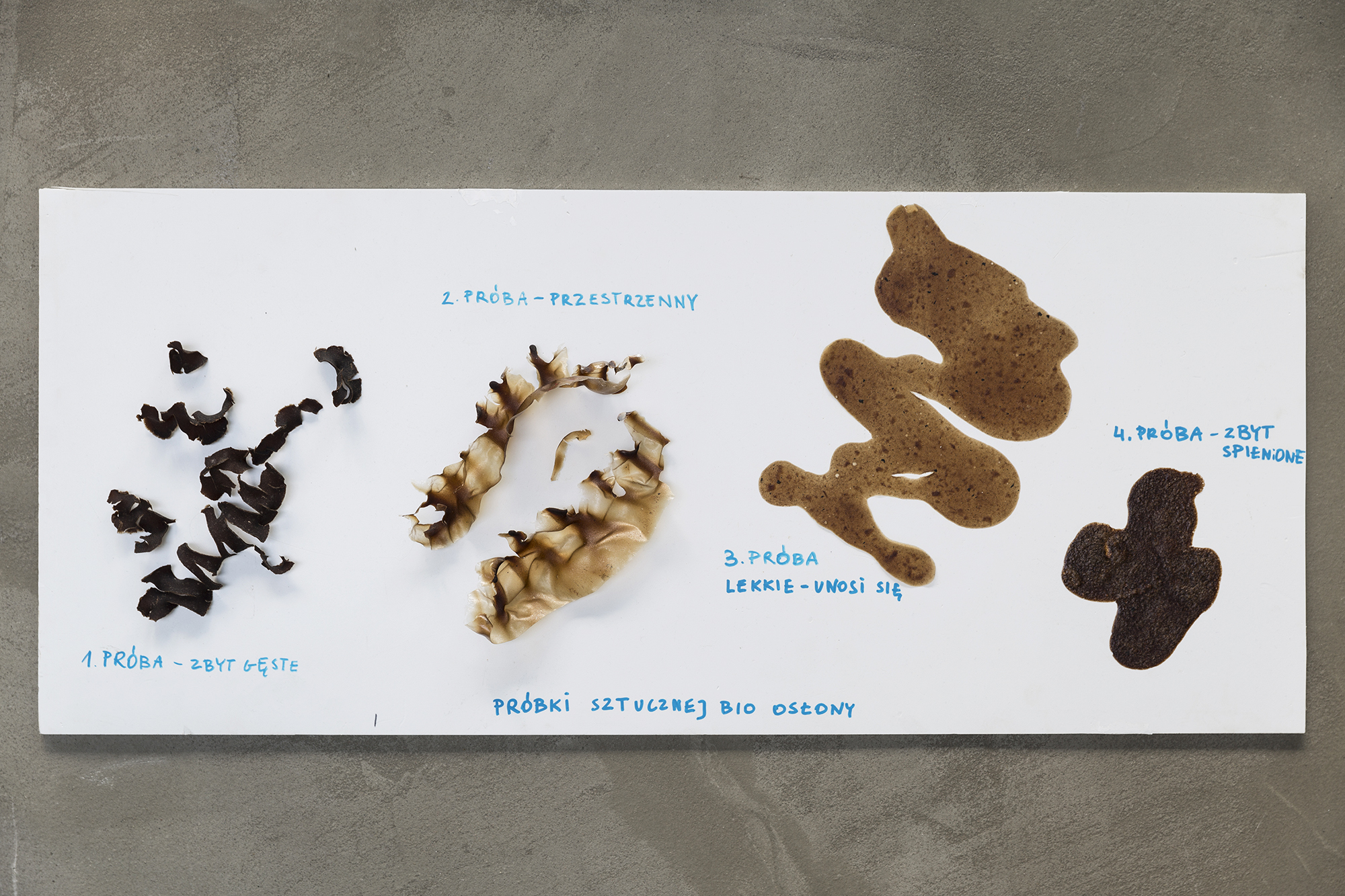Glony

Useful information
- Team members
- Blanka Byrwa Kathryn Larsen
- Country
- Poland
- Keywords
- local production waste circular economy materialdesign sea farming
Short Description
Treating the Baltic Sea as a resource contributes to looking at it's spectrum of ecological problems
Detailed Description
Marine biodiversity creates a fascinating, unique ecosystem that requires our attention and protection. One strategy to do this, is to think of the sea in terms of a material resource.
The project shows how we can make materials from a fully local source, using species naturally occurring in the Baltic Sea. Algae, seagrass, clams, fish - they are a valuable resource that can be recycled for the benefit of the environment, producing natural, biodegradable materials. The main goal of the project is to create the design for the enviroment: "soft" - artificial protection reef that could help reinrtroduce endangered species of algae.
Working with the marine ecosystem is a valuable lesson in interdependence: people, just like Furcellaria lumbricalis, need each other. The project was created in collaboration, bringing together specialists from various areas of knowledge, superwised by Polish Isntitute of Oceanology and created for Gdyna Design Days. Design and science go hand in hand.
Project Details
- Does your design take social and cultural challenges and human wellbeing into consideration?
The Baltic Sea is our social, cultural and material heritage. The shift towards traditional techniques of processing natural resources results from the need to restore our regenerative relationship with the natural environment. Taking care of the Baltic Sea is also a self-care act - our health is entwined with the health of our waters. In an era of increasing climate change, we need to increase awareness of protecting our marine habitats. We believe that by looking at our past, we can take care of our common future together.
- Does your design support sustainable production, embodying circular or regenerative design practices?
Algae, seagrass, clams, fish - these are just some of the many species inhabiting the waters of the Baltic Sea. When washed up, they are usually treated as waste. However, they are a valuable resource that can be recycled for the benefit of the environment, producing natural, biodegradable materials.
In order to sustainably obtain raw materials for research, we focused on supporting the development of locally threatened species: Furcellaria lumbricalis and Zostera marina. In addition, we utilized the wasted skins of Baltic fish, and an invasive species disrupting the natural Baltic Sea ecosystem - Rangia cuneata clam shells.
Furcellaria for Furcellaria
The climate on Earth is constantly changing, but the impact from human activity has negatively harmed it. Fortunately, since we are able to negatively influence our climate, we are also able to take care of it. NOW is the last moment to prevent irreversible changes if we, as humanity, aim to repair our own damage. The ecosystem is us - if we destroy our own home, our species will also cease to exist. While we may have the impression that we have dominated the Earth, we are still dependent on it ourselves. Recycling natural materials from your environment is about going back to basics. A variety of traditional communities around the world have done this, and still treat materials in this way: from Ainu in Hokkaido in Japan to the Inuit people of Alaska, Hezhen in Northeast China, Sami in Sweden, Nanai in Siberia, and more. Today, we have the advantage of technological development and greater knowledge about the environment, so that we can use natural resources in a sustainable way, and create scalable solutions.
Jonne Kotta is an Estonian algae researcher. On the basis of his work on the growth of Furcellaria lumbricalis, an attempt was made to create a soft reef, i.e. a soft artificial meadow, providing protection against waves for algae. Working with the marine ecosystem is a valuable lesson in interdependence: Furcellaria needs one another to live, but when depleted, cannot form meadows. Thus, with human intervention, we can also potentially help them.
The soft reef undergoes gradual degradation, without introducing additional substances into the sea. For this purpose, fullcellarin extraction was carried out from the Furcellaria lumbricalis. The resulting bioplastic samples are designed for the environment: the first material entirely from the Baltic Sea, designed with the sea in mind.
- Does your design promote awareness of responsible design and consumption?
Part of the project is to educate about the dangers of the Baltic sea, using the Furcellaria lumbricalis algae as an example.
Human activity has put the Baltic ecosystem in danger.
Red algae Furcellaria lumbricalis once formed a meadow in the polish part of the Baltic Sea. Its exploitation to produce agar led to its extinction in just 2 years. Currently in Poland, Furcellaria grows on the seabed, but only in very small amounts. In 2018, an attempt was made to restore the meadows, with little to no effect.
Agar agar is one of the most popular half product in the bioplastic research. While many countries in EU collects red algae in a sustainable way, there are parts of the sea where they are endangered.
Here we have highlighted the most important aspect, by identifying threats towards the Baltic Sea’s ecosystem. These include: physical interference with the coastline, overexploitation of resources, eutrophication and toxic pollution, introduction of invasive species and climate change. We believe that treating the Baltic Sea as a common source of resources can lead to increased care for its welfare.
Images


